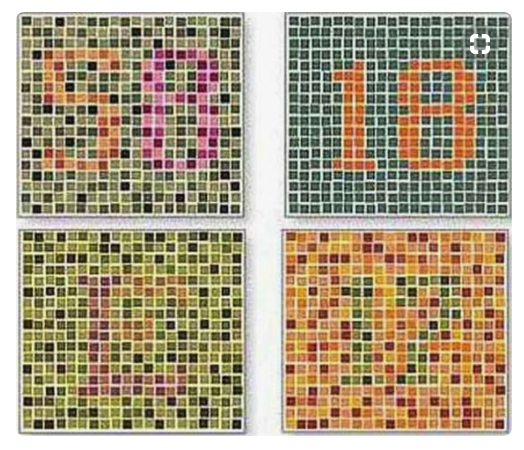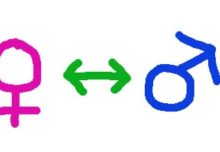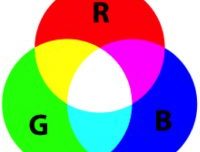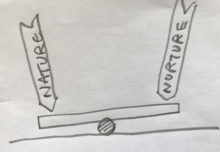RED, GREEN, BLUE CONES and COLOUR BLINDNESS
Colour blindness (originally called ‘daltonism’ after John Dalton)
There are different types of colour blindness, the most common are protanopia (reduced sensitivitiy to red light) and deuteranopia (reduced sensitivity to green light), which are collectively known as red-green blindness. These people have problems distinguishing between reds, greens, browns and oranges. Tritanopia (reduced sensitivity to blue and yellow light) is extremely rare.
About 8% of Northern European males are colour blind. Far fewer females are colour blind because the inherited gene is found in the x chromosome. Males have two but females have only one.

Ishihara colour test
Here are a few famous and successful people who have or have had the condition. [All males]
PAUL NEWMAN, MARK ZUCKERBERG, MARK TWAIN, JACK NICKLAUS,
EDDIE REDMAYNE, BING CROSBY, PRESIDENT BILL CLINTON
Rods and cones
In the back of a human eye there are rods and cones. The rods detect light and dark while the cones are the photoreceptor nerve cells that detect colour. We have up to 6 million cones in each eye, and even more rod cells [90 million]. Wow!
The cones work by detecting visible wavelengths of light in three areas of the spectrum. Blue in short wavelength, green in medium, and red in long. So they are called S-cones, M-cones, and L-cones. It is known as trichromatic vision.
Other life forms are sometimes able to see more colours than we are. Some fish, reptiles, birds, and insects can see ultra-violet, which we cannot. Other animals can see less. Nocturnal animals seem to have little or no colour vision.
The most obvious explanation for such diversity lies in evolved adaption to living conditions and food source.
From Wikipedia:
“Red–green colour blindness is the most common form, followed by blue–yellow colour blindness and total colour blindness….
…The ability to see colour also decreases in old age. Being colour blind may make people ineligible for certain jobs in certain countries. This may include pilot, train driver, and armed forces.
The effect of colour blindness on artistic ability, however, is controversial. The ability to draw appears to be unchanged and a number of famous artists are believed to have been colour blind.”
Artists with colour problems. Examples.
Claude Monet had cataracts and eventually couldn’t tell colours apart.
So did Mary Cassatt who developed her cataracts late in life. [So it does happen to female artists.]
Degas also had a congenital problem gradually losing visual certainty over many years. He made sculpture to compensate.
Edgar Degas: “I am convinced that these differences in vision are of no importance. One sees as one wishes to see. It´s false, and it is that falsity that constitutes art.”
There is a continuing debate about whether Vincent van Gogh was colour blind after Japanese researcher Kazunori Asada saw how much van Gogh’s colour changed in experimental lighting conditions.
Picasso was thought to be colour blind by art lovers who were seeing his blue period. But his later pink period probably counters the argument.
Pablo Picasso: “Painting is a blind mans profession. He paints not what he sees but what he feels.”
So you can do pretty well in the art-world even if you are colour blind.
Conclusion.
Most artists enjoy using a range of tone and colour in their artwork. They can only use 12 million cones to appreciate colour. But they use their 180 million rods to appreciate light and dark. [That’s 12 and 180 because we all have two eyes.]
A lot of art is monochromatic. Drawing, black and white photography, etching and engraving, indian ink paintings are all examples. Many artists don’t go in for colour at all. The tonal range of a flat artwork is very important as well as the colour range.
We painters cannot make art to please our dogs because dogs cannot see all the colours that we can. We are also rather bad at satisfying butterflies and bees because we don’t see or use ultra violet.
However it is very possible to be positive about being a colour blind artist.
Peter Milton [colour blind artist]: “I don´t miss colour. It helps to have a disability- I use that word, it´s a strong word- but it helps to have a disability, because when you can do anything, which of all the things you can do are you gonna choose? So something has to help you to make a choice.”
*********************************************************
What to do next?
Tell a friend or colleague about these blogs and discuss.
You can find more about the books that I have written on this website.. www.howtobeanartist.com




